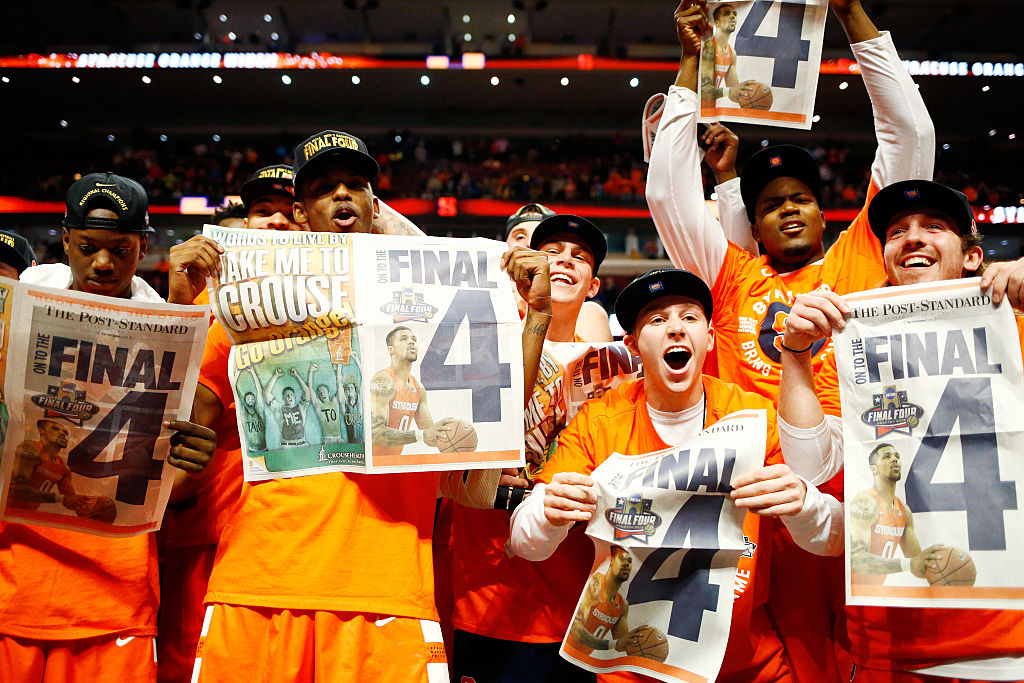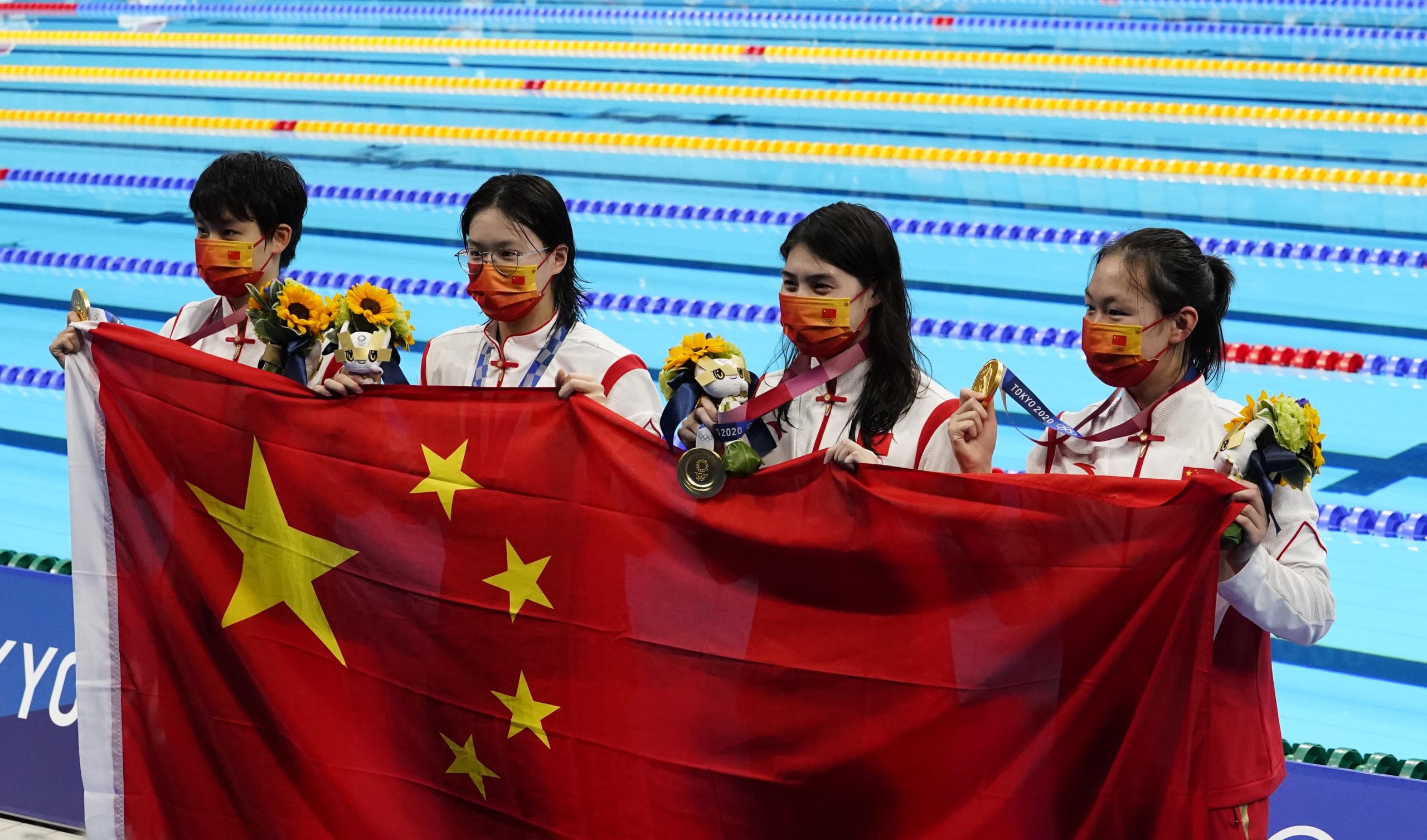Syracuse almost didn’t make the NCAA Tournament. The Orange were 19-13 on the season, 9-9 in conference play, and bracketologists amateur and professional (shout-out Joe Lunardi) alike considered them outside the Tournament bubble.
Then Jim Boeheim’s squad reached the Sweet 16 thanks in part to an easy draw—a weak 7-seed in Dayton then 15-seed Middle Tennessee in the tournament’s first weekend—but very nearly bowed out there. Syracuse trailed Gonzaga by nine points in the second half on Friday night in Chicago, before storming back for the victory.
And the Orange’s season also nearly ended—frankly, should have ended—Sunday in the Elite Eight, when Cuse emerged from halftime down 14 to Virginia, trailing by as many as 16 at any point in the game and by as many as 15 with less than 10 minutes on the game clock, only to charge toward a shocking 68-62 upset.
With all that considered, where does this 10th-seeded Syracuse team rank among the most improbable Final Four teams of all-time? Let’s start with an easy stat:
Syracuse is the 4th double-digit seed to make the Final Four since seeding began in 1979 pic.twitter.com/Odtjexcwcp
— ESPN Stats & Info (@ESPNStatsInfo) March 28, 2016
Though Syracuse is a big-name program with a rich history, it stands along some true Cinderellas on this list. Here’s a brief comparison of this quartet:
| Team | Conference | Record* | KenPom | RPI |
| 2016 Syracuse | ACC | 19-13 | 20 | 72 |
| 2011 VCU | CAA | 24-11 | 42 | 49 |
| 2006 George Mason | CAA | 23-7 | 22 | 26 |
| 1986 LSU | SEC | 22-11 | N/A | 47 |
*entering NCAA Tournament
Syracuse is either the best or worst of these four double-digit-seeded Final Four crashers, depending on which metric you trust (hint: don’t trust RPI), but that looks a little beside the point when we consider the paths these teams took to the Final Four:
- LSU beat a 6-seed, a 3-seed, a 2-seed and a 1-seed
- George Mason beat a 6-seed, a 3-seed, a 7-seed and a 1-seed
- VCU beat an 11-seed (play-in game) 6-seed, a 3-seed, a 10-seed and a 1-seed
- Syracuse beat a 7-seed, a 15-seed, an 11-seed and a 1-seed
All any team can do is beat the teams in front of them, so we can’t fault Cuse for its relatively easy slate, but in terms of pure improbability, the Orange had it relatively easy in their region due to losses by 2-seeded Michigan State and 3-seeded Utah.

In fact, never has a Cinderalla team faced such meek opposition on the way to the Final Four. In 2011, Butler, an 8-seed, toppled a 9, 1, 4 and 2 to reach the closing weekend. In 2013, Wichita State, a 9-seed, beat an 8, 1, 13 and 2.
To find an underdog with even a remotely similar path to that of this year’s Syracuse team we have to go back to 1979, when 9-seed Penn beat an 8, 1, 4, 10, but even still, that was a tougher road than the Orange faced this year.
And sure Syracuse came perilously close to missing the tournament altogether, but the same can be said for George Mason and VCU, the latter of which was forced to compete in a play-in game just to read the final 64. Add in Syracuse’s Hall of Fame coach and proud history and it becomes difficult to reason that the Orange’s run was less predictable than the 2006 Patriots or 2011 Rams.
But all of this overlooks what has made Syracuse’s Final Four run particularly absurd: The Orange faced a substantial deficit in back-to-back games before winning them by a total of only 9 points.
With six and a half minutes to play in the Sweet 16, Cuse looked almost statistically certain to go home, until its defense tightened and guards Trevor Cooney and Michael Gbinije saved the day. And in the Elite Eight, the Orange’s win probability was darn close to 0 percent for much of the second half before role-playing freshman Malachi Richardson caught fire. Compare that road to that of VCU, which played only one really close game (a 1-point overtime win over Florida State that featured no thrilling comeback) on the way to the Final Four. And while most of the other Final-Four-destined Cinderellas played two or three close games on their way, but none faced a pair of deficits like Syracuse did.
At several points during this tournament, the Orange looked completely cooked. You can only imagine Seth Davis had his Sharpie uncapped during the second halves of the games against Gonzaga and Virginia before Syracuse flipped the script. This team is more than just a 10-seed making a deep run, it’s a 10-seed making a deep run by pulling Indiana Jones-caliber escape maneuvers, by staving off death when the Grim Reaper is right by its bedside.
Syracuse is not the worst team to make the Final Four since the tournament expanded to 64, and now 68 teams (that’s probably VCU) nor the least established program to reach this threshold (George Mason), but in terms of defeating impossible odds along the way, there has quite possibly never been a more improbable Final Four team.
And if the Orange upset North Carolina on Saturday to become the first ever double-digit seed in the title game, Syracuse will wear the crown of unlikelihood for quite a while.








